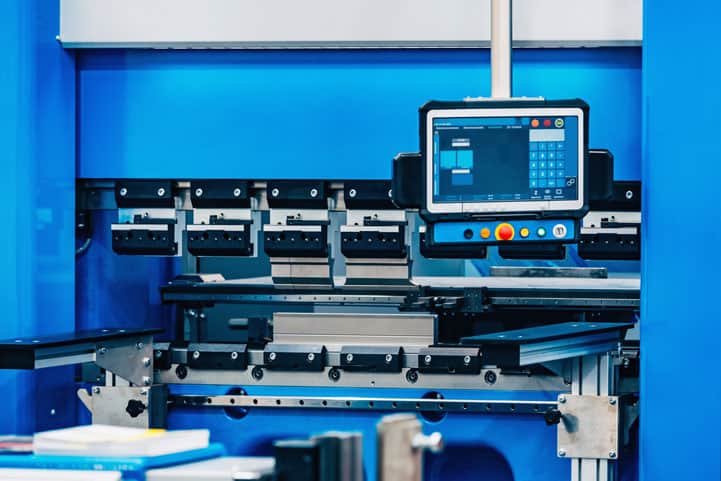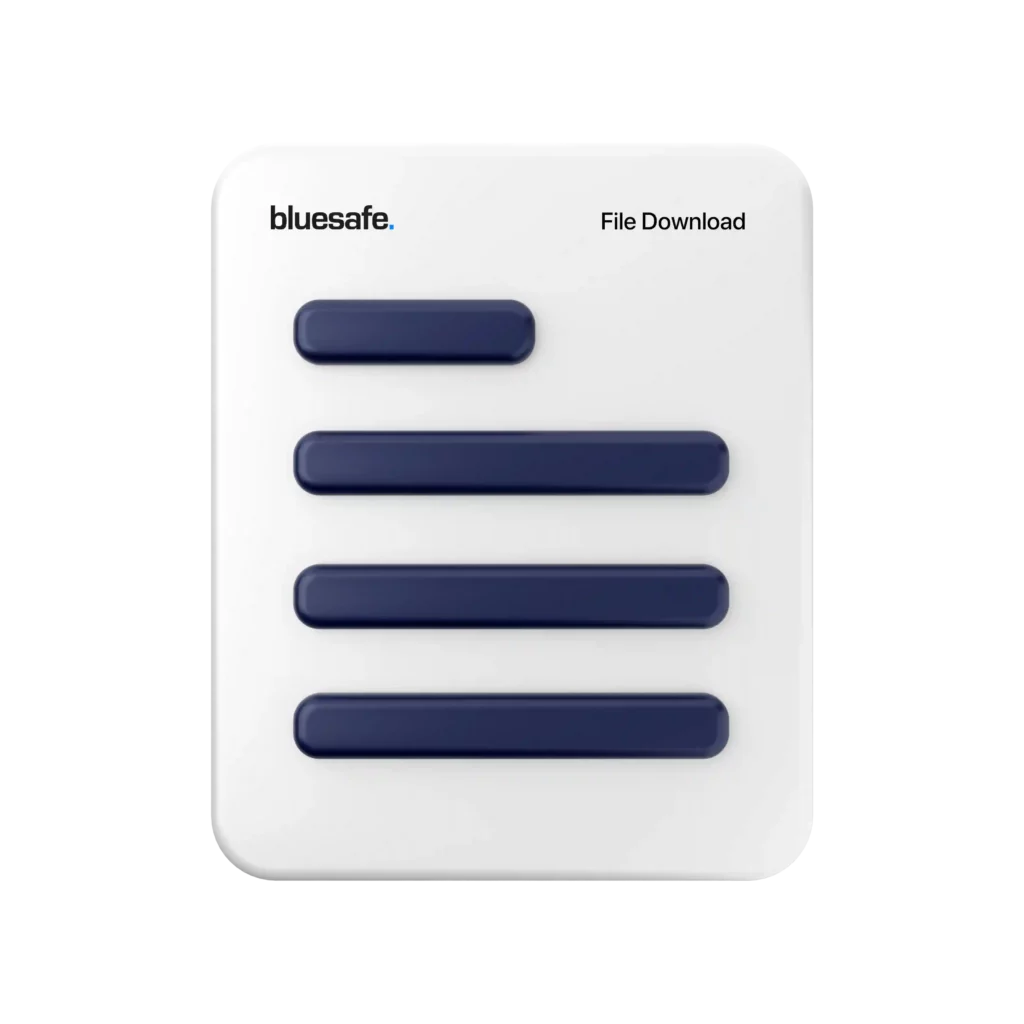Introducing our Safe Work Method Statement Template for working with a press brake – a helpful tool for ensuring safety and compliance in the workplace. Here are the key features of our product:
- Pre-filled and Comprehensive: Our SWMS template comes pre-filled with all the necessary information, including the scope of the project, project details, and legislative references. You can also customise it to suit your specific needs.
- Fully editable and customisable: Our template is in Microsoft Word format, making it easy for you to edit and customise as needed. No need to worry about complicated software or formatting issues!
- Checklist of any high-risk machinery: Our template includes a checklist of any high-risk machinery on site, ensuring that all potential hazards are identified and addressed.
- Space for recording staff training: It’s crucial to keep track of staff training, and our template includes space for you to record any relevant information.
- Before and after risk ratings: Our template includes before and after risk ratings, helping you to track the effectiveness of your safety measures and identify areas for improvement.
- Resources for use of legislative references: Staying compliant with legislative references can be challenging, but our template includes all the necessary resources to help you stay on top of it.
- PPE requirements: Our template includes a comprehensive list of all the required PPE, ensuring that your staff is protected at all times.
- Risk assessment and risk assessment matrix: Our template includes a risk assessment and risk assessment matrix, helping you to identify potential hazards and take appropriate action.
- Checklist to ensure all requirements are covered: Our template includes a checklist to ensure that all requirements have been covered when implementing the SWMS, leaving no stone unturned.
- Sign-off page for workers and responsible persons: Our template includes a sign-off page for all workers and responsible persons, ensuring that everyone is on the same page and committed to safety.
- Easy to use and customise: Our template is easy to use and customise, making it suitable for large contracts and tenders, including tier 1 contractual work.
- Instant download: Our template is available for instant download, so you can start using it right away and ensure safety and compliance in your workplace.
Our Safe Work Method Statement Template for using a press brake is a helpful tool for any business that wants to ensure safety and compliance in the workplace. With its comprehensive features and easy-to-use format, it’s an essential investment for any project or contract.
Here is some safety information regarding Press Brake:
Gary’s Safety Tips 
G’day everyone, it’s great to be here today to talk about one of the most important aspects of any job – safety. As someone who’s been around the block a few times, I can tell you that when it comes to workplace safety, there’s no room for compromise. That’s why I want to chat to you about developing best practices for safe work method statements.
Now, I know what you’re thinking – “Gary, that sounds boring!” But let me tell you, nothing is more exciting than knowing that you’re doing everything you can to keep yourself and your colleagues safe on the job. Plus, following best practices for safe work method statements can save lives, prevent injuries, and even save your business money in the long run. So let’s dive in!
First things first, what is a safe work method statement? A safe work method statement, or SWMS, is a document that outlines the steps you’ll take to complete a job safely. It includes things like identifying hazards, assessing risks, and outlining control measures to eliminate or minimise those risks. Basically, it’s a plan for how you’re going to get the job done without anyone getting hurt.
So how do you develop best practices for safe work method statements? Here are a few tips to get you started:
- Involve your team
One of the most important things you can do when developing a safe work method statement is to involve your team. Your colleagues are the ones who will be doing the job, so they know best what hazards to look out for and what control measures will work best in their specific situation. Plus, involving your team in the process will help to build buy-in and ownership for the safe work method statement, which will increase the likelihood that everyone will follow it.
- Identify all hazards
When developing a safe work method statement, it’s critical to identify all potential hazards associated with the job. This includes things like physical hazards (such as moving machinery or hazardous chemicals), environmental hazards (such as extreme heat or cold), and even psychological hazards (such as stress or fatigue). By identifying all hazards, you’ll be better equipped to assess the risks associated with the job and develop control measures to minimise those risks.
- Assess the risks
Once you’ve identified all hazards associated with the job, the next step is to assess the risks. This involves looking at the likelihood of a hazard occurring and the potential consequences if it does. By assessing the risks, you can prioritise which hazards to address first and determine which control measures will be most effective in reducing the risk of injury or harm.
- Develop control measures
Once you’ve identified hazards and assessed the risks associated with the job, it’s time to develop control measures to eliminate or minimise those risks. Control measures can include things like using personal protective equipment (PPE), implementing administrative controls (such as work rotation or job rotation), or engineering controls (such as installing machine guards or using ventilation systems). The key is to choose control measures that are effective, practical, and easy to implement.
- Review and revise regularly
Finally, it’s important to review and revise your safe work method statement regularly. As new hazards arise or new control measures become available, you’ll need to update your SWMS to ensure that it remains relevant and effective. Plus, regular review and revision of your SWMS will help to reinforce its importance in the minds of your colleagues, which will increase the likelihood that everyone will follow it.
So there you have it – my tips for developing best practices for safe work method statements. Remember, workplace safety is everyone’s responsibility, and following best practices for safe work method statements is one of the best ways to ensure that you and your colleagues stay safe on the job. Thanks for tuning in, and stay safe out there, cobbers!
But wait, there’s more! Developing best practices for safe work method statements is just the first step. Once you have a solid SWMS in place, it’s important to make sure that everyone on your team is trained and informed about it. This means taking the time to educate your colleagues about the hazards associated with their job, the control measures in place to reduce those risks, and the steps they should take if they encounter a hazard that isn’t covered by the SWMS.
In addition, it’s critical to ensure that everyone on your team is held accountable for following the safe work method statement. This means setting clear expectations, providing feedback and corrective action when necessary, and recognising and rewarding positive safety behaviours.
Remember, workplace safety isn’t just a box to check off – it’s an ongoing process that requires commitment and dedication from everyone involved. By developing best practices for safe work method statements and implementing them effectively, you can create a culture of safety that will not only protect your colleagues from harm, but also improve your bottom line by reducing lost time injuries, workers’ compensation claims, and other costs associated with workplace accidents.
So don’t take this too lightly – take workplace safety seriously, and do everything you can to protect yourself and your colleagues. With the right attitude and the right practices in place, you can create a safer, more productive workplace for everyone involved. Cheers!
Cheers,

![]()






